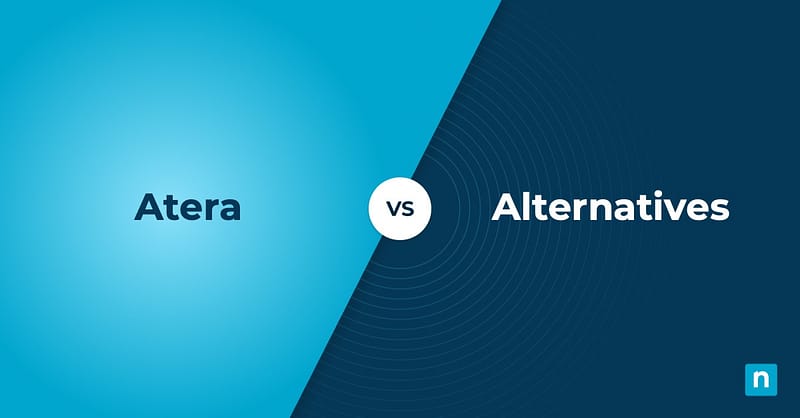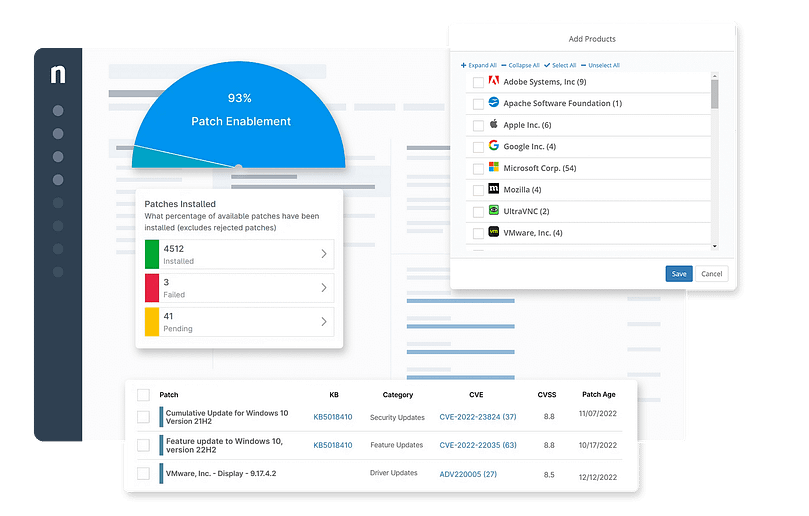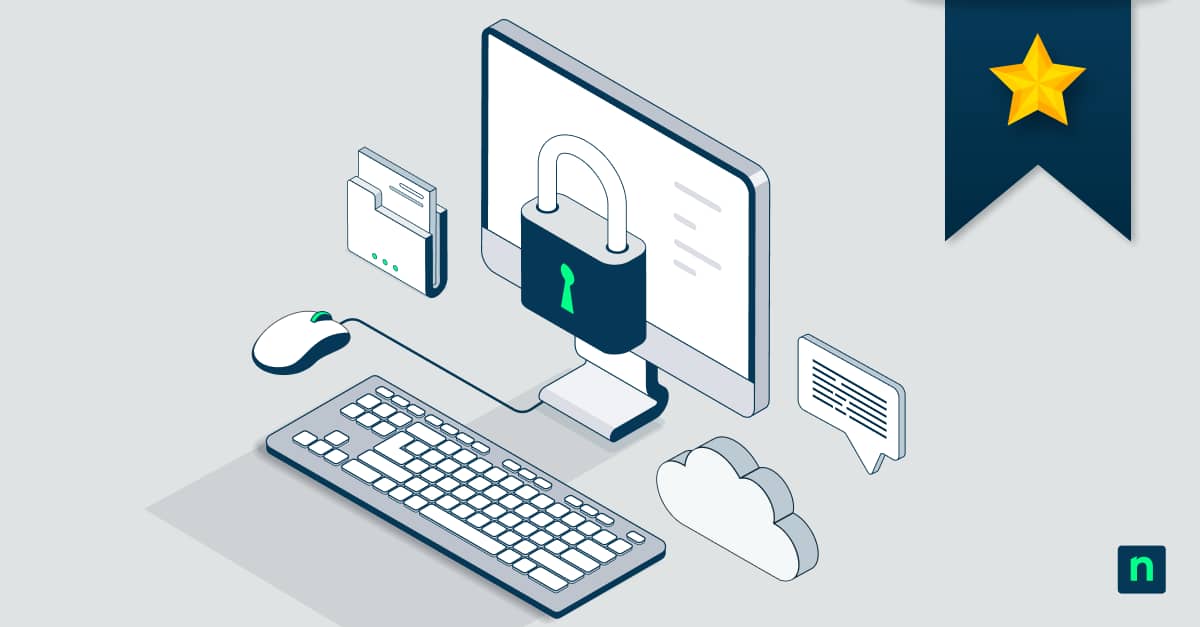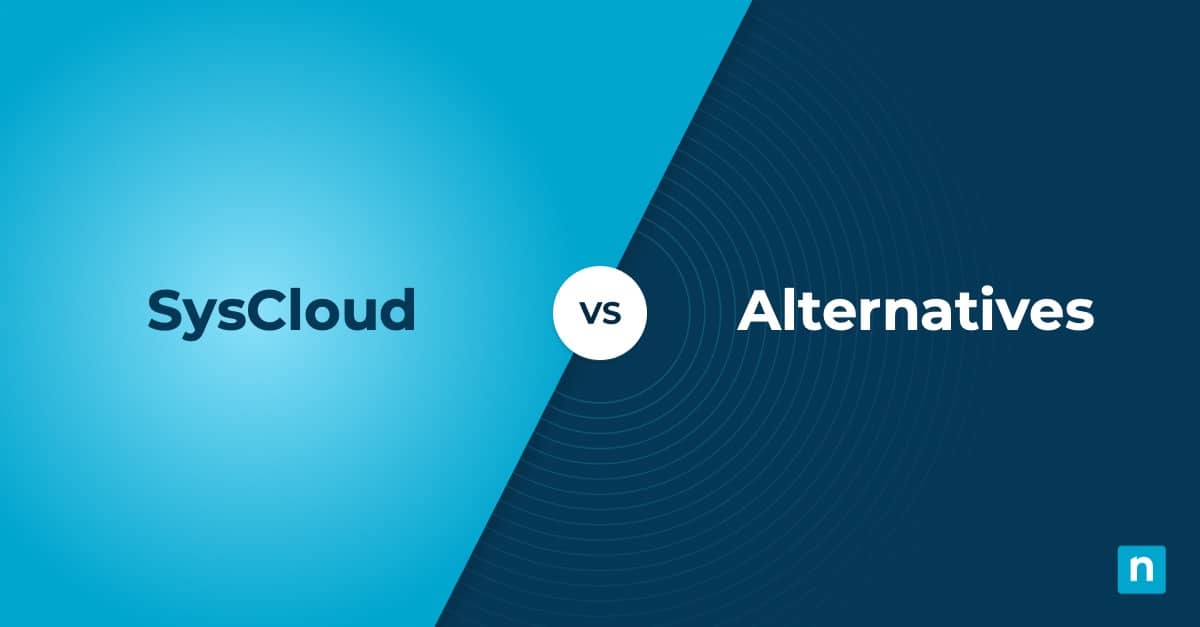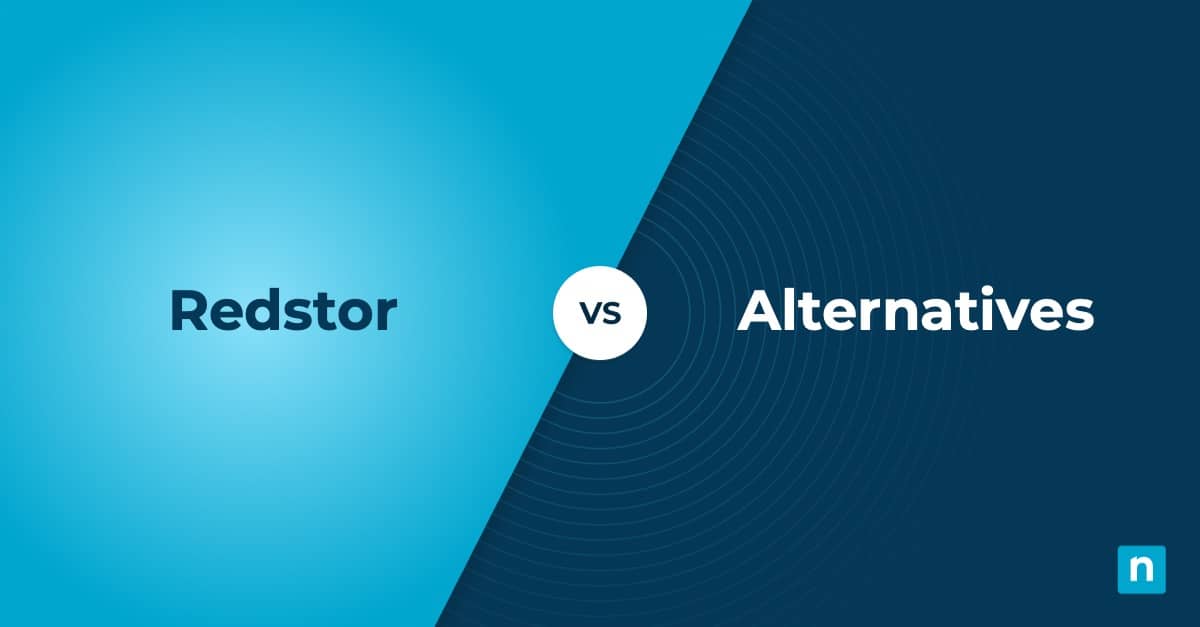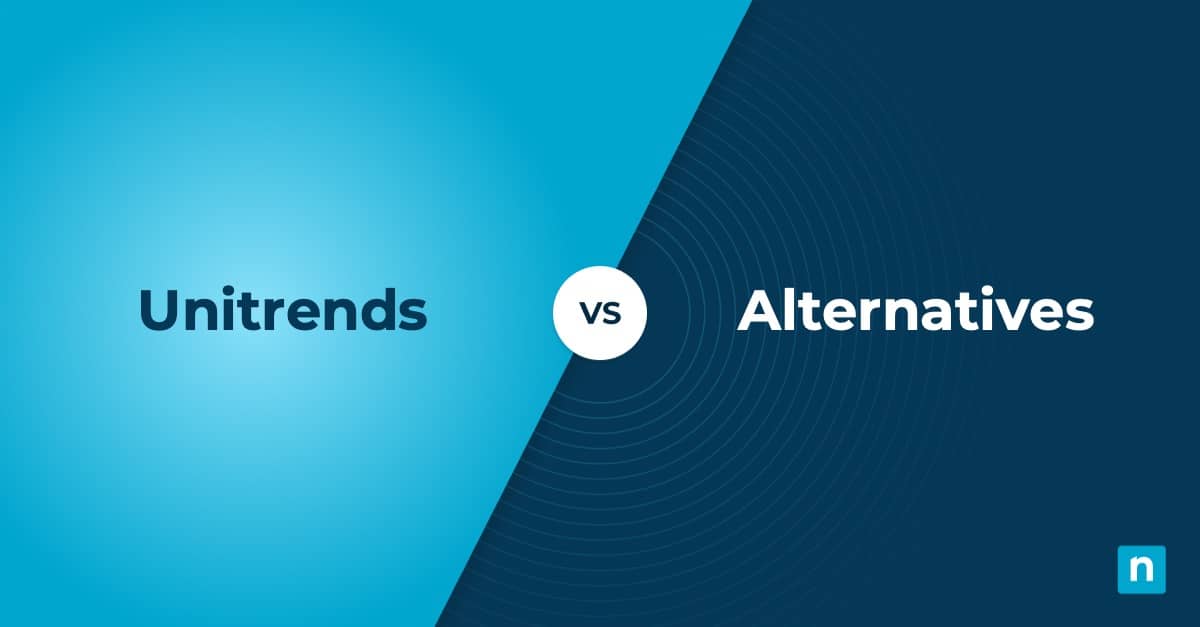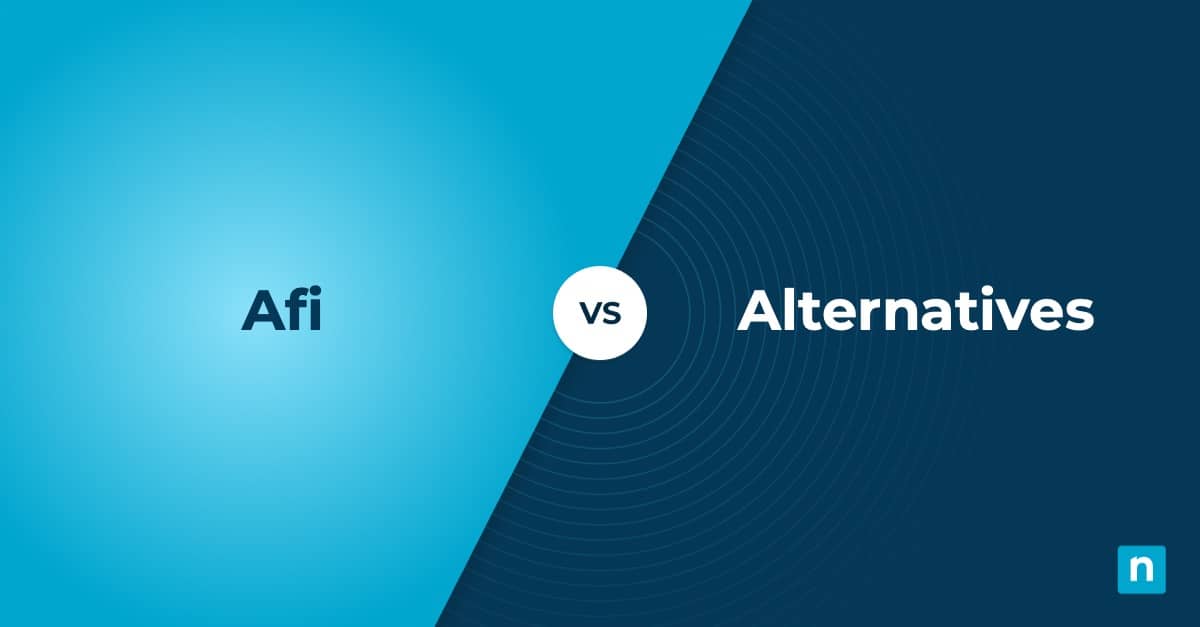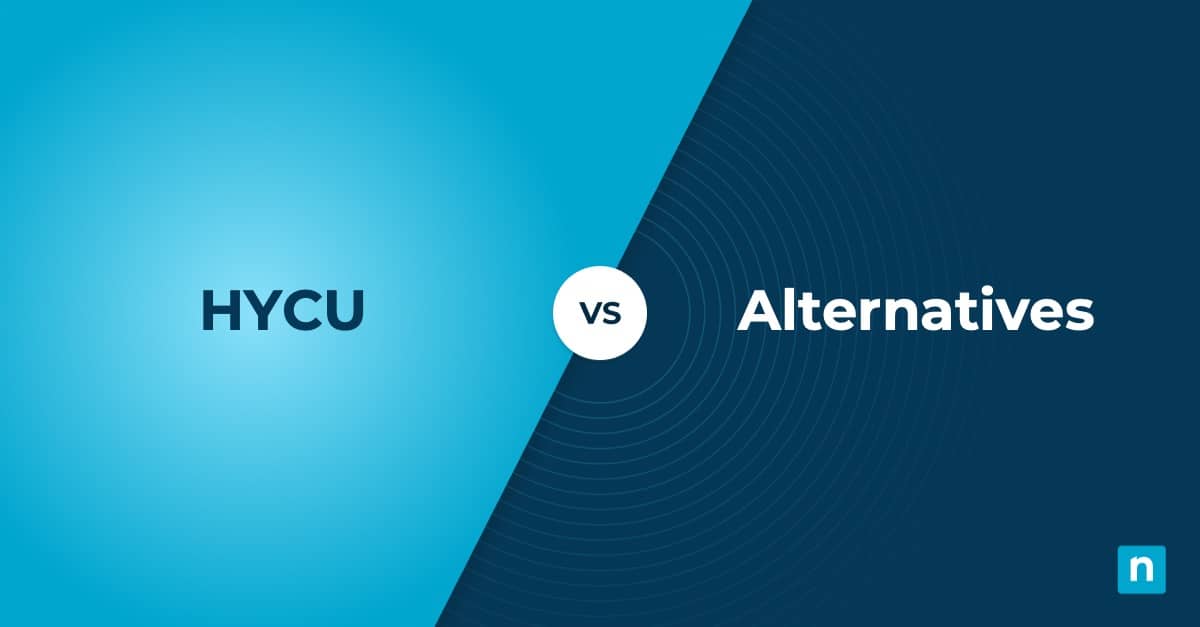Key Points
- NinjaOne is the top Atera alternative, offering superior patch management, automation, integrations, and support—trusted by over 30,000 IT teams and MSPs.
- Other top Atera competitors include:
• ConnectWise
• Datto
• Kaseya
• N-able N-central
• Syncro
• ManageEngine Endpoint Central
• Pulseway
• OptiTune
• Ivanti
• Automox
• Action1 - Why switch from Atera: Teams seek more robust customization, scalability, deeper integrations, and stronger support.
- What to consider: Evaluate features like patching, automation, remote access, cross-platform support, and long-term scalability. Always test options with a free trial.
In your research to find the best RMM for your organization, you may have encountered Atera’s RMM solution. Even so, you may be wondering how the platform compares to other RMM solutions are available on the market.
To help you make the best decision for your MSP, we’ve created this guide on the top Atera alternatives based on genuine user feedback from leading review sites.
1. NinjaOne
NinjaOne, the automated endpoint management software trusted by 30,000+ customers worldwide, is our top choice in this list of alternatives to Atera due to its superior integration capabilities and customization options. The NinjaOne Platform empowers IT teams to be more proactive in their decision-making by giving them the data and tools they need in a single pane of glass, resulting in more productive and happier end users. Being a founder-owned and led organization, NinjaOne is committed to building a product that IT teams from across all industries, from healthcare to government, will find useful.
The numbers speak for themselves:
- 7 out every 10 customers (71%) replaced more than 4 tools with NinjaOne. In fact, 91% replaced 2+ tools.
- 93% reduced the time they spent providing remote support to end users.
- 93% saved time on software deployment.
- 93% saved time on patching.
- 95% of customers improved patch compliance.
- 70% reduced vulnerabilities in their environment by up to 75%.
5 reasons to choose NinjaOne over Atera
1. Reliable patch management across Windows, macOS, Linux, and third-party applications
One reason why business leaders may be searching for the best Atera alternatives is more robust patching. NinjaOne supports Windows, macOS, Linux, and over 200 third-party apps. You also have more reboot options and can scan and deploy patching on separate schedules.
2. Industry-leading support
The importance of excellent and knowledgeable customer support cannot be overstated. Great customer support adds to your overall ROI because it allows you to receive the help you need when you need it. Having been consistently rated as #1 in customer support, NinjaOne empowers you to focus on your core competencies without worrying about who to talk to if and when you need assistance.
3. Seamless integration capabilities
Having your RMM integrate seamlessly with your current IT solution adds to your competitive advantage and overall efficiency. MSPs may be looking for alternatives to Atera as they seek to reduce tool sprawl. NinjaOne reduces this risk by offering numerous integrations with mature, feature-rich applications.
4. Speed of software
NinjaOne is fast – plain and simple. Its RMM solution is designed to drive IT efficiency so that the end users of IT teams are happier and more productive. NinjaOne’s solution remains latent and reliable, even if you keep adding users or are working with multiple organizations. This is a priceless value proposition for MSPs or IT professionals who intend to scale their operations soon.
5. Clear road map
NinjaOne adheres to a clear timeline, so users know what features or updates are coming to the product in the future. Beyond performing IT tasks, great RMM software should offer a road map of where it is headed and the different updates it intends to pursue in the coming months.
NinjaOne consolidates the most essential endpoint management functionalities in one centralized platform.
→ See NinjaOne in action
Strengths of NinjaOne
- Fast, reliable, and consistent patch management: All NinjaOne licenses include robust, automated patch management that operates on a single, actionable interface.
- Extensive integrations: NinjaOne integrates with dozens of apps. This allows you to use all the tools you need on one dashboard rather than working with several different third-party vendors.
- Unlimited scalability: NinjaOne is suitable for everyone, whether you’re a startup business or an established one. Its cloud-based infrastructure can manage any number of endpoints across all operating systems.
- Reliable network services: NinjaOne helps you maintain high network service levels, tight security, and constant visibility into your IT infrastructure. This allows you to make more efficient use of your IT resources.
- Easy to use and set up: NinjaOne ranks high consistently for its ease of setup, admin, and use. Its endpoint management solution is designed to be intuitive so you can focus on the tasks that matter.
Customer Story
Mark Andres, the Director of IT services at GSDSolutions, says that NinjaOne was a no-brainer choice for him. He explains that rather than “cookie-cutter” services offered by other companies, NinjaOne provided him and his team the flexibility and customization they needed to optimize their internal processes and deliver more efficient services to their customers.
“Our biggest challenge with Atera was their remote-control integration – we ended up purchasing Splashtop directly, rolling it out with scripts, and managing it outside the platform. We use remote control all the time, so this wasn’t a tenable solution. Add to this their minimal documentation, poor support, and basic patching, and Atera just didn’t fit our needs,” says Mark.
“NinjaOne gives us all the tools and functionality we need, it’s fast and easy to onboard new clients, the platform saves me time, and it helps us keep clients compliant.”
You can read more customer stories or check out NinjaOne reviews.
Pricing information
NinjaOne’s IT management software has no forced commitments and no hidden fees. You can request a free quote, schedule a 14-day free trial, or watch a demo.
Reviews
NinjaOne G2 Reviews
- 2,759 reviews (at the time of update)
- 4.7 / 5 stars
NinjaOne Capterra Reviews
- 252 reviews (at the time of update)
- 4.7 / 5 stars
2. ConnectWise
ConnectWise RMM is marketed as an aggregate tool that covers both do-it-yourself (DIY) and do-it-for-you (DFY) services in a single interface. It is intended for smaller-sized businesses looking specifically for an outsourced network operations center (NOC).
Popular among larger enterprises, ConnectWise RMM is used by business leaders who need to manage dozens of endpoints at once in a single interface. Its main selling point is that it has a simple onboarding and adoption process so that its users can immediately benefit from the solution.
Features
- Policy-based automation: ConnectWise allows IT teams to remotely manage their endpoints and implement patch management policies.
- Desktop alerting: ConnectWise offers a feature that allows its users to receive notifications on their desktops, especially for more urgent cases.
- AI scripting: ConnectWise leverages AI technology to make scripts more efficient.
Shortcomings
- Integration: Larger MSPs that require a wide range of capabilities may need to rely on additional third-party integrations alongside ConnectWise.
- Performance: Some users have stated that ConnectWise may slow down as more users are added.
- Manual configuration: While automation is a core feature, IT pros may still need to perform manual adjustments to tailor the product to specific organizational requirements.
See how ConnectWise compares to NinjaOne.
Read a more in-depth comparison of ConnectWise competitors, learn more about ConnectWise vs. Atera, or view more ConnectWise head-to-head comparisons.
3. Datto
Datto RMM, now part of Kaseya, offers an integrated platform designed specifically for SMBs. Its solution includes tools such as networking management and business management, helping smaller enterprises improve their business efficiency through automation and integrations.
Datto’s ease of use makes it a practical alternative to Atera, especially for service providers who may not have advanced engineering skills but still need reliable tools to monitor and manage their environments.
Features
- Modern UI: Datto is known for its easy-to-use and easy-to-understand user interface.
- Remote control: Datto allows IT groups and MSPs to remotely monitor and manage their network quite easily.
- Scripting management: Datto allows users to upload their own scripts, allowing for more tailored automation and management.
Shortcomings
- No MDM: Datto previously offered mobile management capabilities, its MDM solution has since been deprecated.
- Patch management: While Datto supports patching for over 200 third-party applications, this functionality is not included in the core RMM package and must be activated separately.
- Customer support: Some users have noted that customer support could improve, especially with response time.
See how Datto compares to NinjaOne.
Read a more in-depth comparison of Datto competitors, learn more about Datto vs. Atera, or view more Datto head-to-head comparisons.
4. Kaseya
Kaseya is an endpoint management platform that offers comprehensive remote monitoring and management capabilities for scaling IT environments. The platform’s flagship feature, the RMM solution referred to as the Virtual System Administration (VSA), enables streamlined and centralized IT management, including patching, automation, remote troubleshooting, and more.
Kaseya is marketed as a solution designed for all IT professionals looking for endpoint management software to unify their IT operations seamlessly.
Features
- Monitoring and alerting: Kaseya offers comprehensive monitoring and alerting capabilities, allowing IT administrators to identify potential issues before they affect the whole system.
- Auto-remediation: The platform also has functionalities that allow IT administrators to automate issue fixes and fundamental troubleshooting tasks to help speed up resolution.
- Patch management: Kaseya VSA provides centralized patch management for Windows, macOS, and third-party applications.
Shortcomings
- Navigation: Some Kaseya users expressed challenges when navigating the platform, saying it takes time to get to features buried deep within the user interface.
- Reporting: Others pointed out some difficulties they encountered when generating reports from the Kaseya platform.
- Integration with related products: Some users found integrating Kaseya effectively with other products within the Kaseya ecosystem challenging.
See how Kaseya compares to NinjaOne.
Read a more in-depth comparison of Kaseya competitors or learn more about Kaseya vs. Atera.
5. N-able N-central
N-able N-central is a unified endpoint management SaaS solution focusing on remote monitoring and management functionalities. The platform offers endpoint management, security, backup, and automation capabilities that cater to on-premises, cloud, or hybrid IT environments.
N-able N-central is suited for both managed service providers and internal IT teams for organizations of all sizes, making it an ideal choice for businesses seeking an endpoint management solution that provides RMM features with dedication to endpoint security.
Features
- Integrations: N-able N-central offers integrations for IT operations such as PSA, backup, reporting, security, and other third-party services.
- Multi-platform support: N-able N-central lets IT administrators manage endpoints running on different operating systems and platforms in one centralized console.
- Automation: N-able N-central provides a library of over 650 pre-built scripts, enabling automation across various skill levels – from no-code to pro-code development.
Shortcomings
- Navigation: Some users report that interface can be challenging to navigate, especially when it comes to locating less frequently used settings of settings.
- Set-up: According to G2 reports, there is a steep learning curve to using N-able N-central.
- Customer support: Other users have mentioned that getting support may be challenging.
See how N-able N-central compares to NinjaOne.
Read a more in-depth comparison of N-able N-central competitors or learn more about N-able N-central vs. Atera.
6. Syncro
Syncro is a platform designed primarily for MSPs, but it is also flexible enough for IT teams in businesses and organizations that want to centralize their endpoint management.
It combines RMM, PSA, and remote access in one solution, allowing IT pros to manage operations, customer interactions, and service delivery more efficiently.
Because of this, Syncro is often considered one of the best Atera alternatives for MSPs that want a balance of affordability and functionality.
Features
- Mobile app: Syncro has a dedicated mobile app with essential endpoint management features that IT administrators can use on the go.
- PSA features: The IT solution also offers service management tools integrated with the platform.
- Remote access: Syncro allows IT administrators to perform troubleshooting through remote access, reducing the need for physical intervention.
Shortcomings
- Endpoint activity monitoring: Some users have expressed a need for enhanced endpoint activity monitoring within Syncro, such as the ability to detect active user sessions without requiring a direct connection.
- Support and service: Others pointed out the need for improvement in the platform’s customer support, specifically on the speed of issue resolution.
- macOS support: Other users with endpoints running on macOS wished setting up their devices for Syncro was more streamlined and straightforward.
See how Syncro compares to NinjaOne.
Read a more in-depth comparison of Syncro alternatives or learn more about Syncro vs. Atera.
7. ManageEngine Endpoint Central
ManageEngine Endpoint Central is a unified endpoint manager that helps organizations centralize IT operations like patching, software deployment, device control, and security management. It provides IT teams with a single console to manage desktops, servers, mobile devices, and virtual machines, making it a strong option for MSPs and internal IT departments.
For businesses comparing Atera alternatives, ManageEngine Endpoint Central stands out with its broad device coverage and built-in security capabilities.
Features
- Device support: ManageEngine Endpoint Central supports various endpoints, from smartphones and tablets to computers and rugged devices.
- Security: The platform also offers security features such as malware protection, browser security, application control, and more.
- Software management: ManageEngine Endpoint Central has software management capabilities such as application templates, software repositories, metering, etc.
Shortcomings
- Agent upgrades: Some users have reported challenges with agent upgrades for endpoints that have been offline or disconnected from the internet for extended periods.
- Linux support: Others mentioned that while the platform is a good tool for Windows and macOS endpoints, its support for Linux needs improvement to catch up.
- Steep learning curve: According to some ManageEngine Endpoint Central users, learning and familiarizing themselves with the platform could be a challenge.
See how ManageEngine compares to NinjaOne.
Read a more in-depth comparison of ManageEngine Endpoint Central compares to competitors or see how ManageEngine Endpoint Central compares to Atera.
8. Pulseway
Pulseway is a cloud-based platform that gives IT teams and MSPs the ability to monitor and manage endpoints from anywhere. Its design emphasizes mobility, with a strong mobile app and cloud-first approach that makes it easy for administrators to stay connected on the go. The core platform covers essential RMM capabilities, with add-ons allowing organizations to expand into areas like security, patching, and automation.
Because of its mobile-first design, Pulseway is often reviewed as one of the best Atera alternatives.
Features
- Auto-remediation: Pulseway enables IT administrators to set up remediation workflows for streamlined and quicker IT issue resolutions.
- Third-party app patching: The platform offers patch management for third-party apps and operating systems, ideal for maintaining a secure IT environment.
- Server monitoring: Pulseway provides software monitoring and management capabilities that help IT administrators keep track of performance and uptime status.
Shortcomings
- Reporting: Some users note that the reporting features could be improved, especially when compared to other Atera alternatives on this list.
- Linux integration: Several users have reported that Pulseway lacks adequate Remote Desktop capabilities for Linux systems.
- Remote control: A few users describe the desktop remote control experience as “clunky” or in need of smoother responsiveness.
See how Pulseway compares to NinjaOne.
Read a more in-depth comparison of Pulseway competitors or learn more about Pulseway vs. Atera.
9. OptiTune
OptiTune, developed by Bravura Software, is an endpoint management solution tailored for IT departments and MSPs. It delivers essential endpoint management capabilities such as RMM, monitoring and alerting, patch management, and more.
OptiTune promotes its broad accessibility capability, which enables IT administrators to manage devices and IT infrastructure remotely from any location with internet connectivity. It’s an ideal choice for organizations and MSPs that require flexibility and the ability to manage their IT environment from anywhere.
Features
- Monitoring and alerting. OptiTune immediately alerts IT administrators when a potential issue arises.
- Update status. The platform presents users with a dashboard showing detailed graphs and breakdowns on the patching status and progress.
- Endpoint security. OptiTune integrates with IT security services that can provide endpoint protection from disruptive threats.
Shortcomings
- Integrations: While OptiTune handles core endpoint management well, it offers fewer out-of-the-box integrations with PSA, security, or automation tools, which may require additional workarounds for MSPs with broader software stacks.
- Steep learning curve: Some users mention that initial setup and navigation in OptiTune can take time, especially for those unfamiliar with RMM tools.
- Support for Linux. According to some users, OptiTune’s functionalities are Windows/macOS oriented, posing challenges for IT administrators managing Linux endpoints.
Read a more in-depth comparison of OptiTune competitors or see how OptiTune compares to NinjaOne.
10. Ivanti
Ivanti is an endpoint manager solution that consolidates the management of both end-user computers and mobile devices into a single, unified platform. This comprehensive solution provides core endpoint management services and primarily targets enterprises and IT departments aiming to streamline device management and optimize their overall IT operations.
For those exploring best Atera alternatives, Ivanti stands out as a robust alternative to Atera for businesses focused on infrastructure and security consolidation.
Features
- IT asset management: Ivanti offers ITAM capabilities through its cloud-based platform, Ivanti Neurons, which provides organizations with comprehensive hardware and software observability.
- Digital experience management: Ivanti Neurons for Digital Experience helps IT proactively identify and fix user device and application issues to improve employee experience and productivity.
- Voice integration: Under the platform’s service management capabilities, Ivanti integrates existing phone systems with IT service desks to enhance customer experience through call routing and voice self-service.
Shortcomings
- Agent updates: Users mentioned that Ivanti requires manual agent updates, which can be challenging for clients who cannot easily reboot their servers.
- Setup and navigation: Others pointed out that setting up Ivanti is complex, and post-setup navigation can be challenging.
- Documentation: Some users say documentation must be maintained and updated to help with accurate troubleshooting and faster resolution.
See how Ivanti compares to NinjaOne.
Read a more in-depth comparison of Ivanti competitors or learn more about Ivanti vs. Atera.
11. Automox
Automox is an endpoint management system that focuses on robust automation functionalities to help IT administrators save time by streamlining repetitive tasks. In addition to automation, it offers essential endpoint management features such as patch management, remote troubleshooting, analytics, and more.
It’s a strong contender for IT teams and MSPs prioritizing security and efficiency and often appears among the best Atera alternatives due to its centralized control and streamlined workflows.
Features
- Cross-platform updating: Automox allows IT administrators to automate cross-platform updates and patching for a streamlined and consistent patching process across various operating systems.
- Remote control: Automox enables remote troubleshooting of endpoints directly within its console, eliminating the need for separate tools or processes.
- Lightweight agent: The platform claims to have a lightweight agent that doesn’t take up negligible system resources.
Shortcomings
- Reporting: While Automox includes reporting features, some users note they would benefit from more detailed and customizable reporting options to gain clearer insights into patch and policy outcomes.
- Real-time visibility: A few users mention that policy or device status updates can sometimes slow down, which may affect real-time monitoring in fast-moving environments.
- Dashboard accuracy: In some cases, the high-level dashboard view doesn’t always align perfectly with detailed activity logs.
See how Automox compares to NinjaOne.
Read a more in-depth comparison of Automox competitors or learn more about Automox vs. Atera.
12. Action1
Action1 is a cloud-based endpoint management platform that supports organizations in managing and securing their IT infrastructure. It offers tools to monitor and oversee endpoints remotely, streamline IT operations, and maintain compliance with industry requirements. The solution is designed to provide centralized control over devices, accommodating both on-premises and cloud environments.
Among Atera alternatives, Action1 stands out as a lightweight yet powerful option, particularly for teams wanting fast deployment and real-time visibility without traditional VPN dependencies.
Features
- Patch management: Action1 offers a cloud-native patch management solution designed for MSPs to handle cross-OS and third-party patching and software deployment.
- Software deployment: Action1 has a cloud-native solution for automating software deployment, patching, and inventory across in-office and remote devices without a VPN.
- Initial vulnerability assessment: Action1 offers a free one-time vulnerability assessment for unlimited endpoints for organizations to gauge the platform’s vulnerability management functionality.
Shortcomings
- On-prem server support: Action1 users pointed out that the limited support for on-prem servers impacts users relying on centralized repositories for offline updates.
- Remote desktop: A few users suggest that the remote desktop experience could be smoother, with enhancements to overall responsiveness and interface flow.
- Documentation: Other Action1 users said its documentation could benefit from more in-depth explanations for users with less technical expertise.
See how Action1 compares to NinjaOne.
Read a more in-depth comparison of Action1 competitors or learn more about Action1 vs. Atera.
What is Atera?
Atera is a well-known cloud-based IT management platform designed for MSPs and internal IT teams. It combines RMM and PSA into a single interface. By unifying technical and business functions, Atera allows IT professionals to monitor devices, deploy patches, automate tasks, and manage customer relationships from a centralized console.
While the platform is positioned as an all-in-one platform, readers may search for Atera alternatives for several reasons. Some IT teams may eventually outgrow its feature set, requiring more advanced customization, scalability, or integrations with other enterprise tools. Others may be seeking different pricing structures, deployment models, or specialized features that align more closely with their workflows.
See how Atera compares against NinjaOne.
Using this guide of the best Atera alternatives
Evaluating alternatives to Atera does not have to be difficult. We recommend using this guide to determine a platform that most adequately fits your workflows, needs, and long-term growth plans. Keep in mind that each of Atera competitors outlined in this article offers its own strengths, making it easier to identify the right alternative to Atera for your environment. It would also be wise to conduct a vendor assessment and evaluate which software provider can help you achieve your business goals more efficiently.
Simplify and take control of your IT infrastructure with NinjaOne’s complete endpoint management solution.

